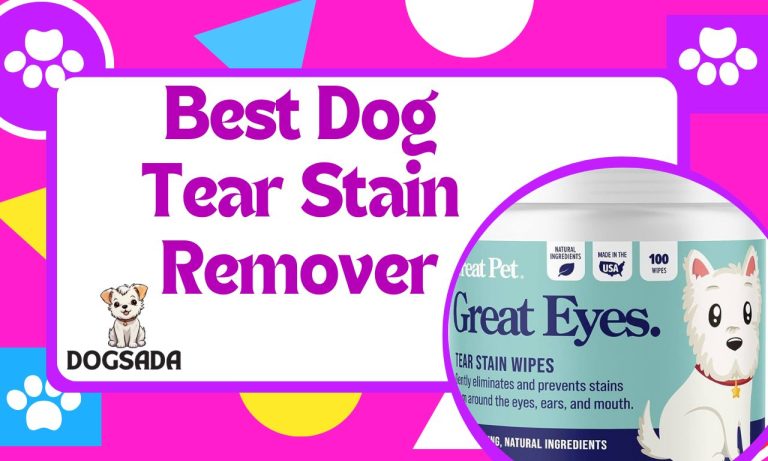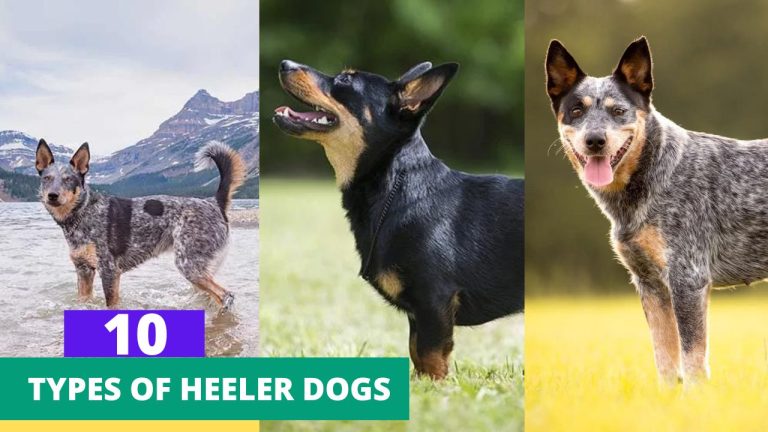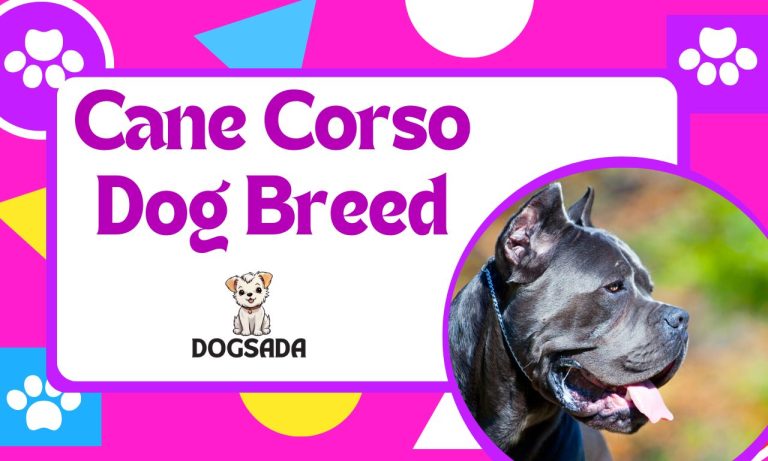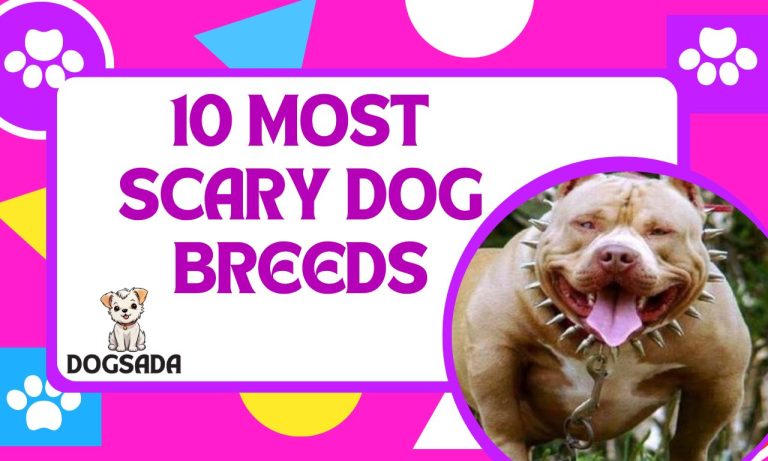In this blog post DALMATIAN DOG BREED INFORMATION, Dalmatians are a truly fascinating strain. They’ve been around an incredibly long time, have had numerous jobs throughout history, and indeed gone by colorful names. In this article, we are here with the Dalmatian dog breed information complete guide so you don’t have to worry about your dog. Let’s begin!
Appearance
| Dalmatian dog breed information | |
| Size | 19 to 24 inches |
| Weight | 45 to 70 pounds |
| Life Span | 11 to 13 years |
| Nature | friendly, playful, timid |
| Good with | cats, children, dogs, families |
| Energy level | active |
| Exercise needs | high |
| Barking | infrequent |
| Breed Group | non-sporting |
| Coat Length | Short |
| Colors | black, brown / chocolate / liver, white |
| Patterns | spotted |
| Brushing | Daily |
Dalmatian History
The Dalmatian’s origins are unknown. The spotted dogs are known to have traveled with the vagrant bands of Romanies, occasionally called wanderers, and it’s unclear where they may have first appeared. Read also Best Dog Grooming Tools For Long-Haired Dogs
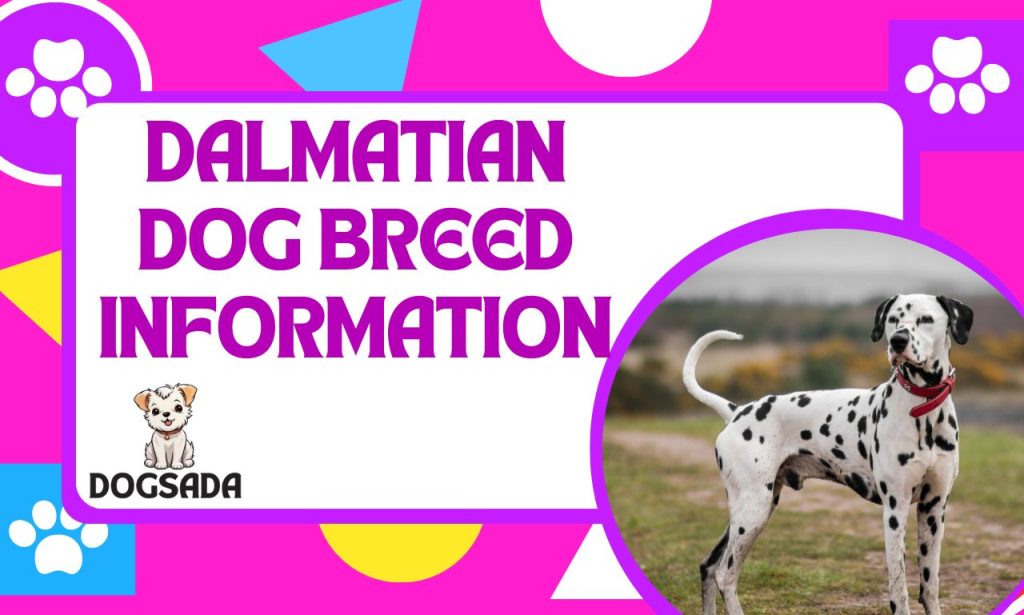
The Dalmatian attained his name during his stay in Dalmatia, a fiefdom on the eastern reinforcement of the Adriatic Sea, the area that’s now known as Croatia. Dalmatians have been employed for various jobs during their long history, no way specializing in one location. They were used as guard dogs in Dalmatia, goatherds, ratters, retrievers, circus dogs, and guide dogs.
It was in England that the Dalmatian was developed as the definitive coaching canine. He was used to clearing a path before the nags and running alongside the trainer or under the trainer between the axles. He guarded the nags and trainer when they were at rest. To this day the Dalmatian has a natural affinity for nags.
This affinity took the Dalmatian on a different career path in the United States. Then he came a firehouse canine, running with the nags to the fire, watching over the outfit during a fire, and occasionally delivering people from burning structures. When the excitement was over, they accompanied the fire carts back to the station and proceeded with their duty as a watchdogs. At the moment most Dalmatians are companions and family members but numerous firehouses across the country still have Dalmatians as phylacteries.
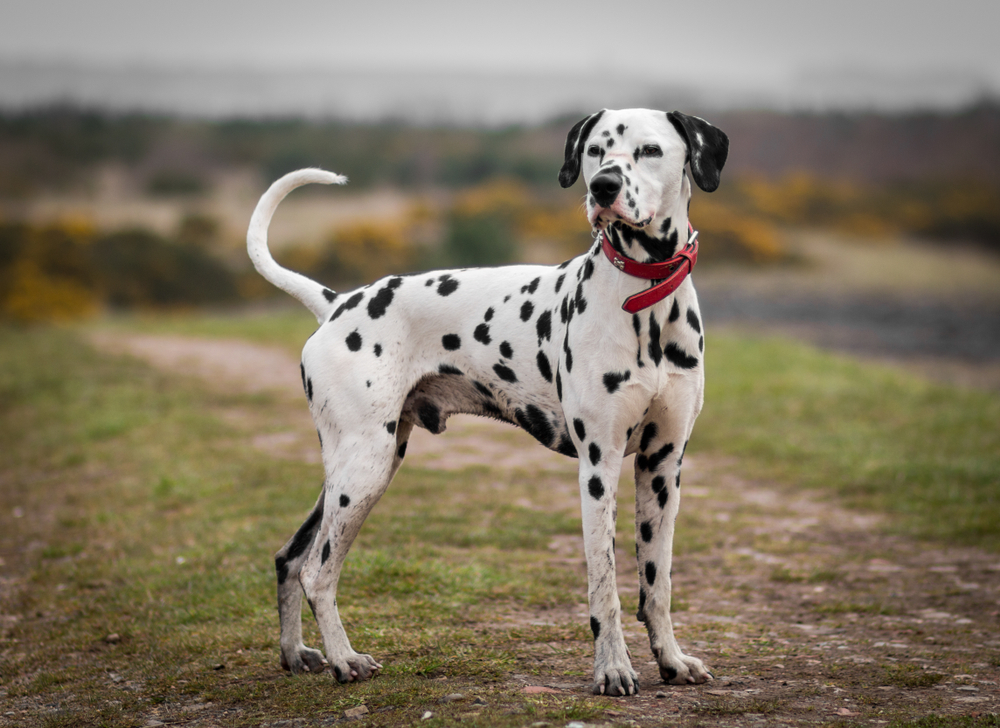
Nature
Dalmatian Disposition Dalmatians are best known as carriage dogs and firedogs, and they’re well suited to these jobs. They’re people acquainted, intelligent, sportful, and pious, and although they’re able to be relatively staid when the occasion calls for it, they’re just as likely to play the zany at home.
Dals are people acquainted and tend to be fairly complete at learning new tricks, and they do well with aged children, although they may be a bit too boisterous for numerous babies and toddlers, and relations with these age groups should be precisely supervised.
Dalmatians are well known for their abidance, their speed, and their defensive natures; still, these same traits may also lead to some of the further grueling aspects of retaining a Dalmatian. All the energy that’s needed for a canine to follow a steed-drawn carriage for long hauls comes out as restlessness, anxiety, and destructive tendencies if the beast isn’t handed the occasion for ample exercise regularly.
Although they have a natural affinity for nags, if they aren’t duly mingled as puppies, Dalmatians can develop aggressive and territorial actions towards other dogs, particularly dogs of the same coitus. Nature wise this is the complete Dalmatian dog breed information.
Read also Best treat dispenser toys for dogs
Ideal Owner
Dallies draw attention wherever they go so people will know you as ‘ the person with the spotty dogs ’ indeed if they don’t know your name! Dallie possessors must also be prepared to be covered in chalet hair, and the power of a robot vacuum cleaner is largely recommended.
Otherwise, you should be able to take extremely long and active diurnal walks and plenty of training and live nearly with good access to a variety of country walks. Dallies will suit homes with aged children or child-free homes as long as someone is home most of the time. Owning a Dalmatian dog breed information is given in this paragraph which shows who is suitable for this dog.
Dalmatian Health Concerns
Dalmatians like other dogs are predisposed to quite a few health concerns. Here are the health concerns faced by Dalmatians
Hereditary deafness
This is inherited as a polygenic particularity and all Dalmatian pedigrees can pass along deafness to their seed. roughly eight percent of Dalmatians are born fully deaf and 22 to 24 percent are born with hail in one observance only. All puppies are born with their cognizance closed.
The cognizance should open by 12 to 16 days of age. In Dalmatians, deafness is characterized by the endless deterioration by the age of six weeks of the organs of Corti, the whim-whams cell group inside the cochlea that describes sound.
Manual hail tests similar to stomping on the bottom, and banging kissers together are unreliable because the deaf puppy dog can feel the climate and frequently learns to acclimatize veritably well. The only dependable scientific test is the BAER( Brainstem Auditory Evoked Response).
This isn’t available in all areas but is available at most large specialty practices and tutoring hospitals at veterinary seminaries.
It can be done any time after the puppy dog is five weeks old. dogs that are used for parentage should have been tested for deafness, and numerous breeders test puppies before they’re transferred to their new homes.
Urolithiasis
The Dalmatian has a unique urinary tract system which makes them susceptible to the conformation of urinary tract monuments( Urolithiasis). The urine of a Dalmatian contains uric acid rather than urea or allantoin. monuments are formed from the mariners of uric acid. Large monuments will lodge in the urethra; small monuments also called clay may pass with the urine.
If the urinary tract becomes fully blocked and the condition isn’t treated instantly it’ll be fatal. Dalmatians must have acceptable water at all times and salutary operation with food that isn’t high in purines can be helpful. You can ask your warhorse to check your dogs ’ urine at regular intervals for urate chargers.
There’s a lot of exploration being done in this area so new treatment and operation protocols are always being developed. Bandy this with your warhorse.
Skin disinclinations
Numerous Dalmatians suffer from skin disinclination. There are three main types of disclinations food- grounded disinclination, which is treated by an elimination process of certain foods from the canine’s diet; contact disinclinations, caused by a response to a topical substance similar to coverlet, flea maquillages, canine soaps, and other chemicals,
and treated by removing the cause of the mislike; and inhalant disinclinations, caused by airborne allergens similar as pollen, dust, and mildew. The drug for inhalant disinclinations depends on the inflexibility of the mislike. It’s important to note that observance infections frequently accompany inhalant disinclinations.
Read also Best Freeze Dried Dog Food
Hipsterism dysplasia
Hipsterism dysplasia is an inheritable condition in which the femur doesn’t fit snugly into the pelvic socket of the hipsterism joint. Hipsterism dysplasia can live with or without clinical signs. Some dogs parade pain and lameness on one or both hind legs. As the canine periods,
arthritis can develop. X-ray webbing for hipsterism dysplasia is done by the Orthopaedic Foundation for Creators or the University of Pennsylvania’s hipsterism Enhancement Program. dogs with hipsterism dysplasia shouldn’t be bred. Ask the breeder for evidence that the parents have been tested for hipsterism dysplasia and set up to be free of problems.
Iris Sphincter Dysplasia
An inherited optical complaint that can beget perceptivity to bright light, poor night vision, partial or total blindness, and cataracts. At this point, it isn’t constantly seen in Dalmatians although some studies argue that it’s frequently overlooked. The condition and its treatments are being studied.
Dalmatian Health Care
The Dalmatian is a veritably active canine and needs a plenitude of exercise. He’s a fast runner with a great deal of stamina. However, so always exercise him on a leash or in a secure area, If left to his own bias a Dalmatian will head cross country on a spin that could last several days. Dalmatians thrive with mortal fellowship and don’t do well if relegated to the vicinity.
They should have a plenitude of time with their family or they will pine. Because of his unique uric acid metabolism, it’s important to observe whether your Dalmatian is urinating regularly. For the same reason, be sure to give him easy access to fresh water all the time.
Dalmatian Feeding
Recommended diurnal quantum 1.5 to 2 mugs of high-quality dry food a day, divided into two reflections.
NOTE:
How important your adult canine eats depends on his size, age, figure, metabolism, and exertion position. dogs are individualities, just like people, and they don’t all need the same quantum of food. It nearly goes without saying that a largely active canine will need further than a settee potato canine.
The quality of canine food you buy also makes a difference. The better the canine food, the further it’ll go toward nourishing your canine and the lower it you’ll need to shake into your canine’s coliseum.
Grooming
The distinctive Dalmatian fleece is lovely to touch, being short, satiny, and fine. The covers of their heads feel nearly like velvet. The base color is white with well-defined thick black or deep brown(liver-colored) round spots that vary from song size to partial bone size unevenly distributed over the fleece.
Anticipate to see lower spots on the legs, head, and tail. Spotted cognizance adds the perfect touch. ( Where the Dalmatian’s spots came from is a riddle. It’s a study that they may have been caused by a mutation in the ticking gene.) Dalmatian puppies are born pure white, and the spots appear as they progress.
The exception is puppies born with patches, solid millions of thick, brilliant black or liver-colored hair with no white hair. Patches are appreciably larger than normal-size spots, and they’ve smooth, sprucely defined edges. Large color millions formed by lapping or immingled spots aren’t the same as patches. You can tell the difference because these millions have uneven edges or white hairs scattered throughout.
Dalmatians with patches aren’t right for the show ring, but they make impeccably fine family companions or performance dogs. You may also see tricolor Dalmatian dogs with tan markings on the head, neck, casket, leg, or tail of a black or liver-spotted canine. Dalmatians are clean dogs with little or no “ pooch ” odor, and their fleeces are dirt-repellent.
It’s not unusual for these dogs to roll around in the slush and also dry to a flashing shine. Be apprehensive, still, that they exfoliate time- round. A common joke among people with Dalmatians is that they exfoliate only two different times during the day and during the night.
Brushing
Anticipate brushing your Dalmatian daily with a medium-soft rubber curry encounter to get the hair off the canine before it lands on your clothes and cabinetwork.
Bath
With regular brushing, it shouldn’t be necessary to bathe your Dalmatian further than three or four times a time. Further frequent bathing removes essential canvases from the fleece and skin and can make them dry and short.
Nail Trimming
However, trim his nails formally or doubly a month to help with painful gashes and other problems, If your canine doesn’t wear them down naturally. However, they’re too long, If you can hear them clicking on the bottom. Canine toenails have blood vessels in them, and if you cut too far you can beget bleeding — and your canine may not cooperate the coming time he sees the nail clippers come out.
So, if you’re not experienced with trimming canine nails, ask a warhorse or groomer for pointers. His cognizance should be checked daily for greenishness or a bad odor, which can indicate an infection. When you check your canine’s cognizance, wipe them out with a cotton ball dampened with a gentle, pH- pH-balanced observance cleanser to help prevent infections.
Don’t fit anything into the observance conduit; just clean the external observance. Begin introducing your Dalmatian to being brushed and examined when he’s a puppy dog. Handle his paws constantly, dogs are touchy about their bases and look inside his mouth. Make fixing a positive experience filled with praise and prices, and you’ll lay the root for easy veterinary examinations and other running when he’s an adult.
Eye Care
As you prepare, check for blisters, rashes, or signs of infection similar to greenishness, tenderheartedness, or inflammation on the skin, in the nose, mouth, and eyes, and on the bases. Eyes should be clear, with no greenishness or discharge. Your careful daily test will help you spot implicit health problems beforehand.
This is the complete grooming Dalmatian dog breed information you need in order to groom your pet.
Life with Family
As long as they get the exercise they need, the Dalmatian can make an excellent addition to an active energetic family but they may be too boisterous for youngish children( and many parents of youngish children have the time to devote to their exercise needs).
While numerous dogs are traditionally allowed to be good with children, all dogs and children need to be tutored to get on with each other and be safe together. Indeed so, dogs and young children should no way be left alone together and grown-ups should supervise all relations between them.
Are Dalmatians good for families?
Dalmatians can make atrocious faves for the right family. They will need an active family due to their high energy, however. The strain also tends to do better with aged kiddies than youngish bones, as their energetic natures might lead them to accidentally knock down a little bone in their vibrance.
Still, the Dalmatians will be defensive of children in the family, so they won’t hurt a child on purpose. nearly supervise any playtime between this strain and children. These pups will also want to be involved in every family exertion, so everyone in the family will enjoy the plenitude of relating time!
Getting along with other pets
Still, they should be suitable to get along with other faves, If you begin fraternizing your puppy dog at an early age. This strain can occasionally have issues with other dogs in the home, however, particularly if the other doggy is of the same coitus. A Dalmatian may become aggressive with other doggies. Still, early socialization can help minimize any aggression on their part.
When it comes to kitties, a Dalmatian should be impeccably fine. Kitty may not be as fine, however, due to how high-energy these pups are. pussycats may not enjoy the quantum of exertion a Dalmatian will bring, and there’s also a chance a Dalmatian could run roughshod over a cat during buoyant play. But this strain shouldn’t dislike pussycats or try to hunt them down.
FAQs
What’s so special about Dalmatian dogs?
The Dal was first bred to guard nags and trainers, and some of the old defensive instinct
remains. Reserved and staid, Dals can be frosty with nonnatives and are reliable tools. With their preferred humans, Dals are bright, pious, and loving house dogs.
Where do Dalmatians live?
Originating in Croatia, in the formerly-named region of Dalmatia, Dals have a working and sporting heritage. Due to a natural affinity for nags, Dalmatians were frequently used as carriage dogs and accompanied steed-drawn firefighting carts in America as well.
Are Dalmatians easy to train?
For educated possessors, their intelligence means they can be easy to train as they’ll really enjoy learning new things. However, if or are a first-time canine proprietor, also you should ask for the help of an accredited coach If you are not an educated coach.
Conclusion
In this article, we have brought the complete Dalmatian dog breed information. If you have a Dalmatian dog or are trying to get one then this article is here with all the information required so you do not have to worry about anything.

